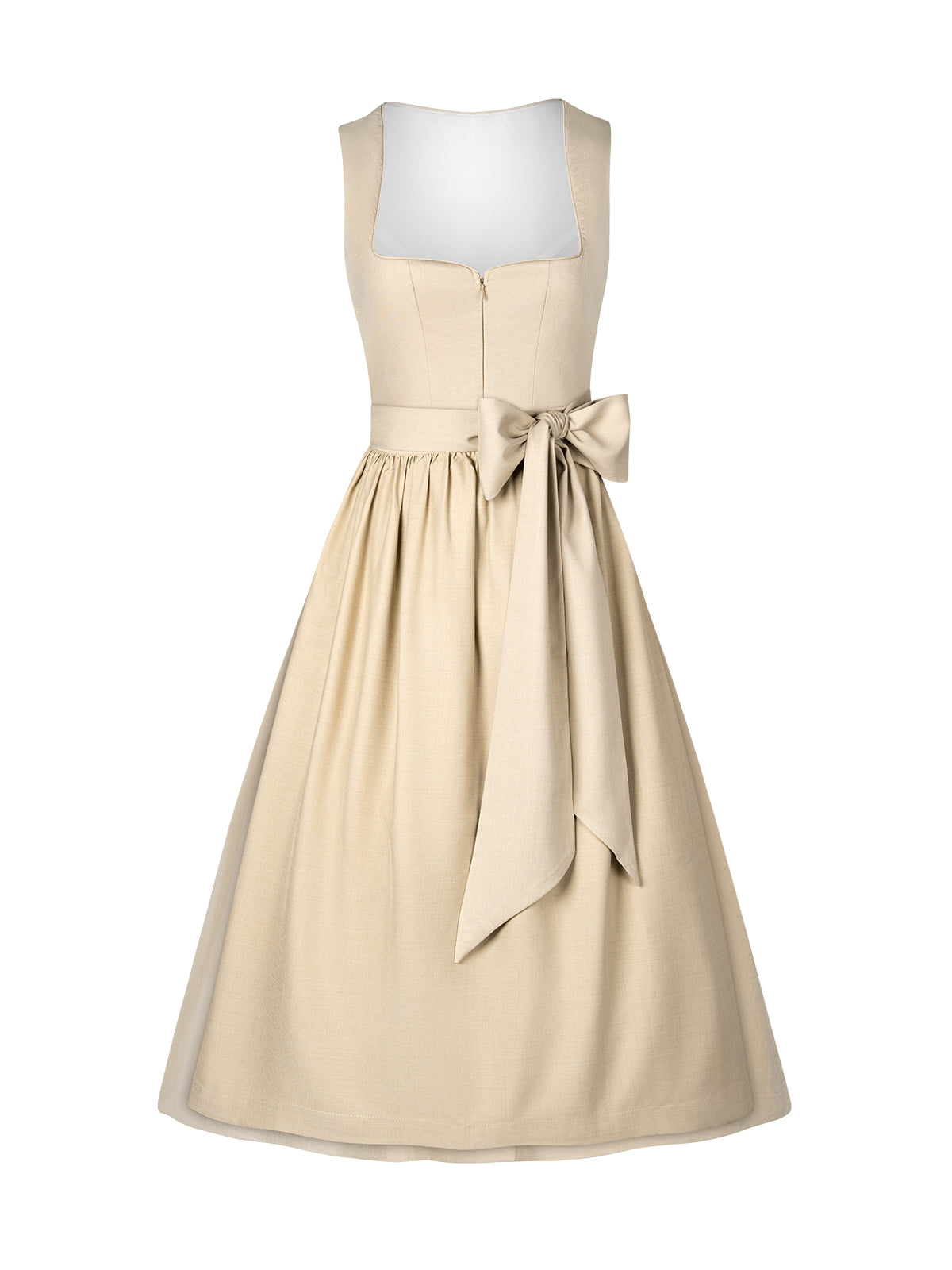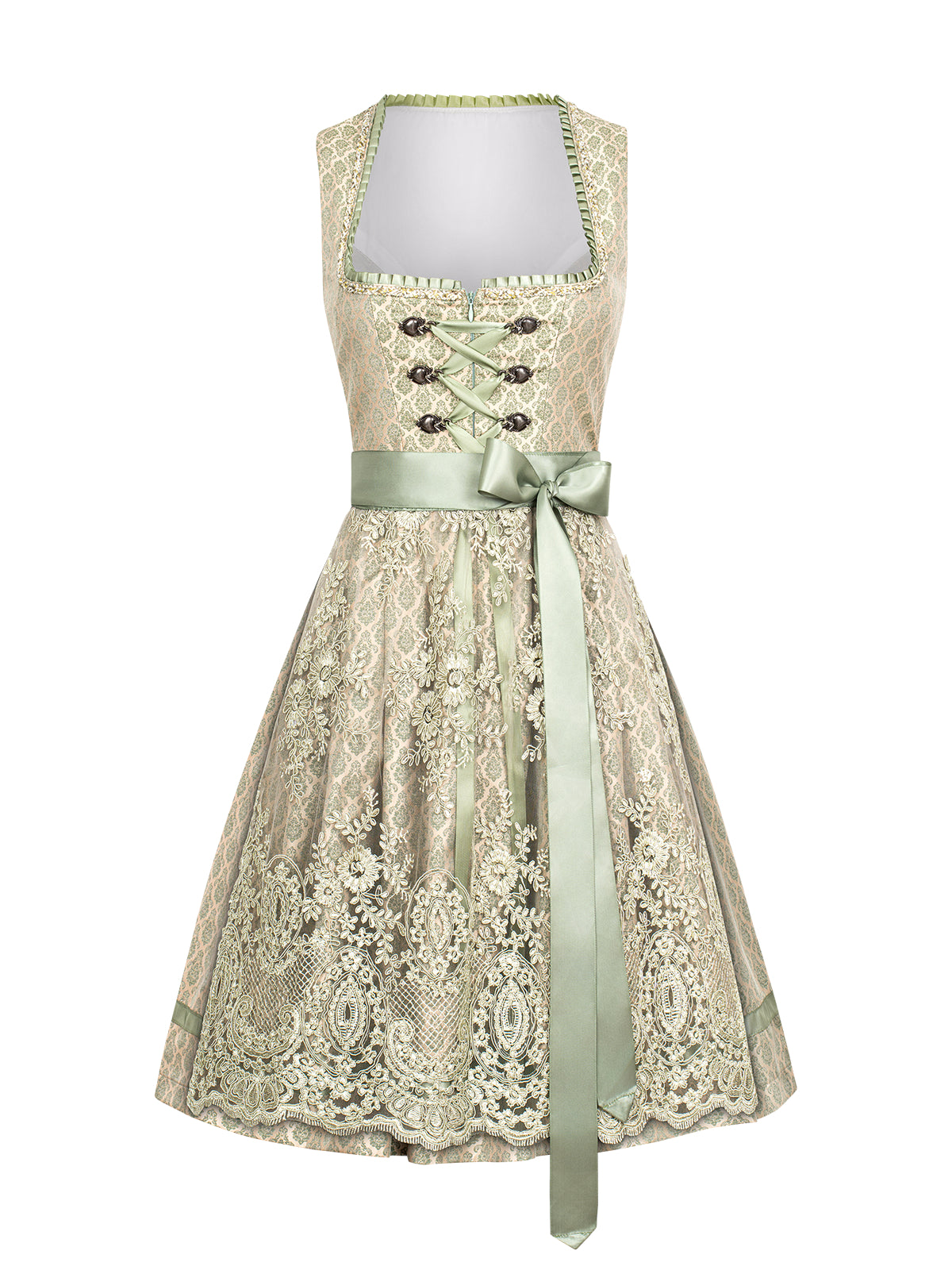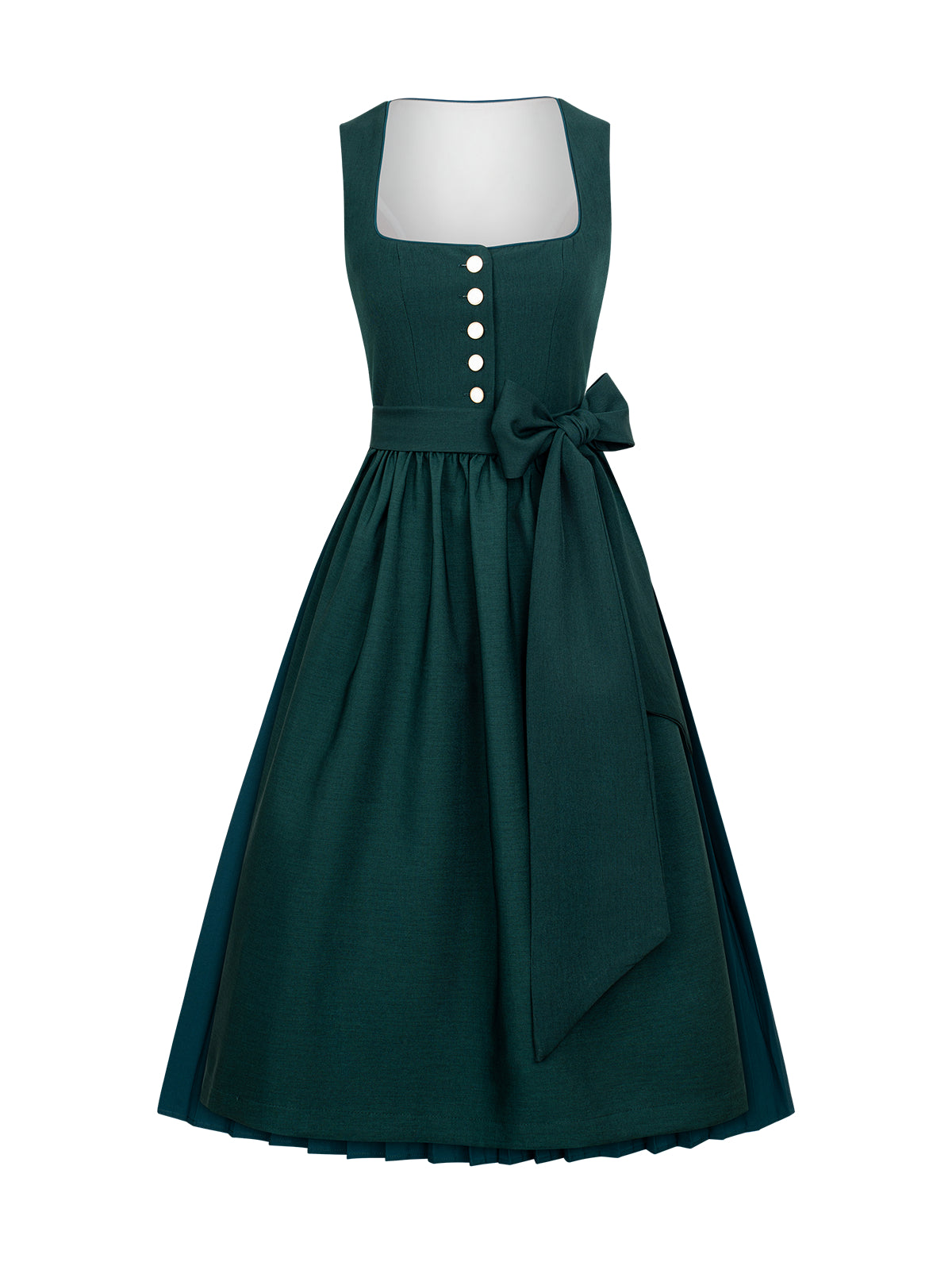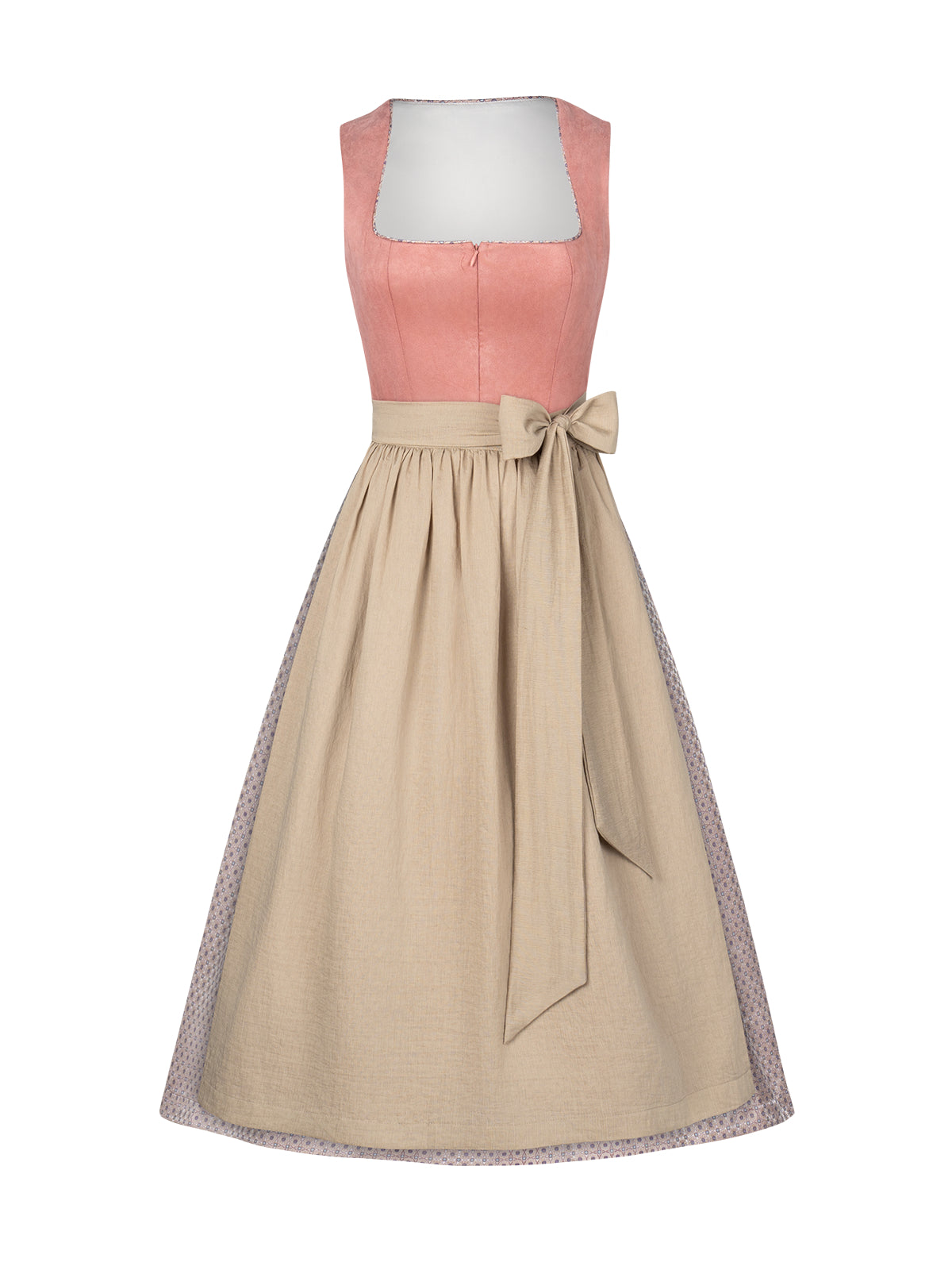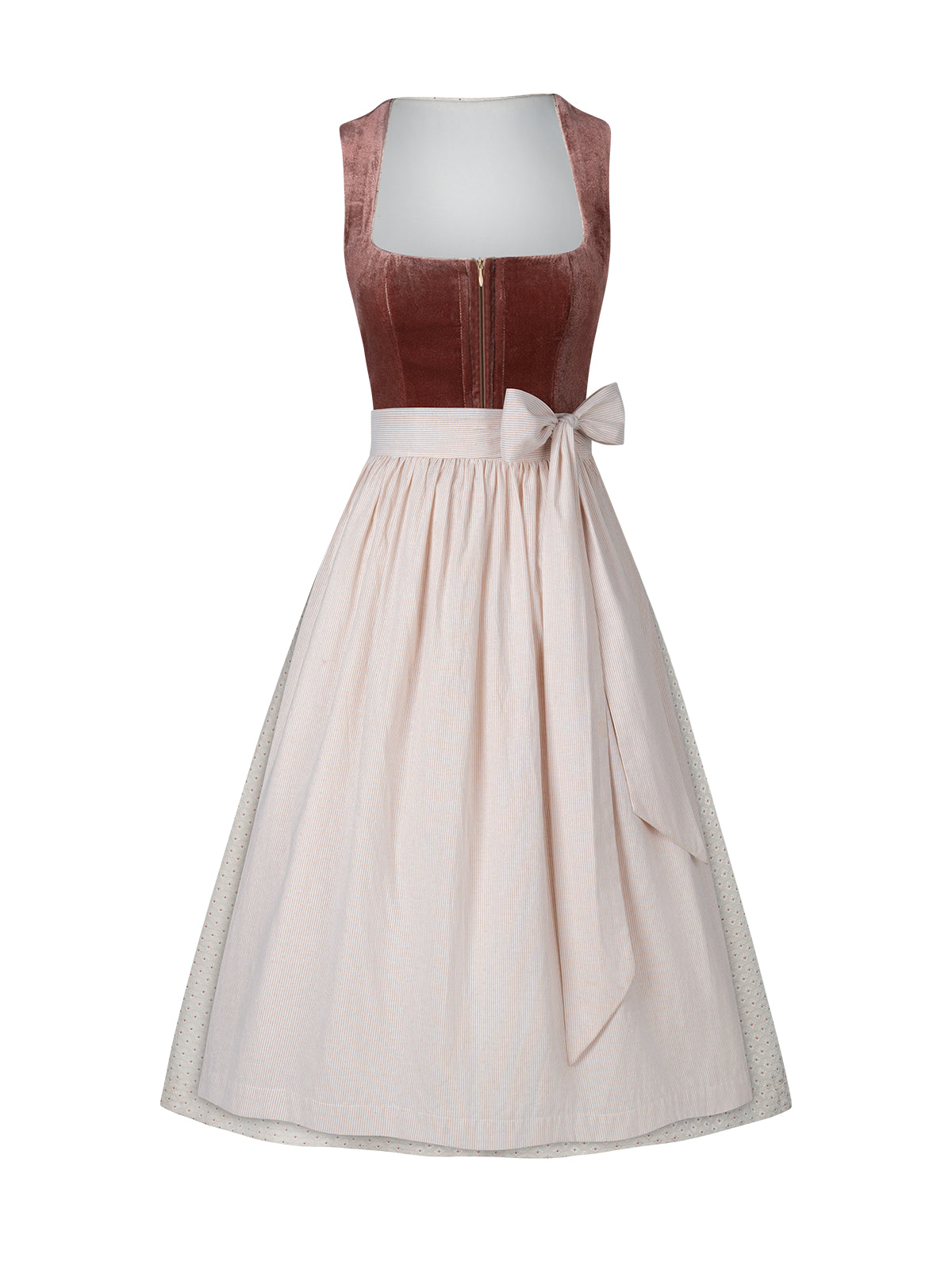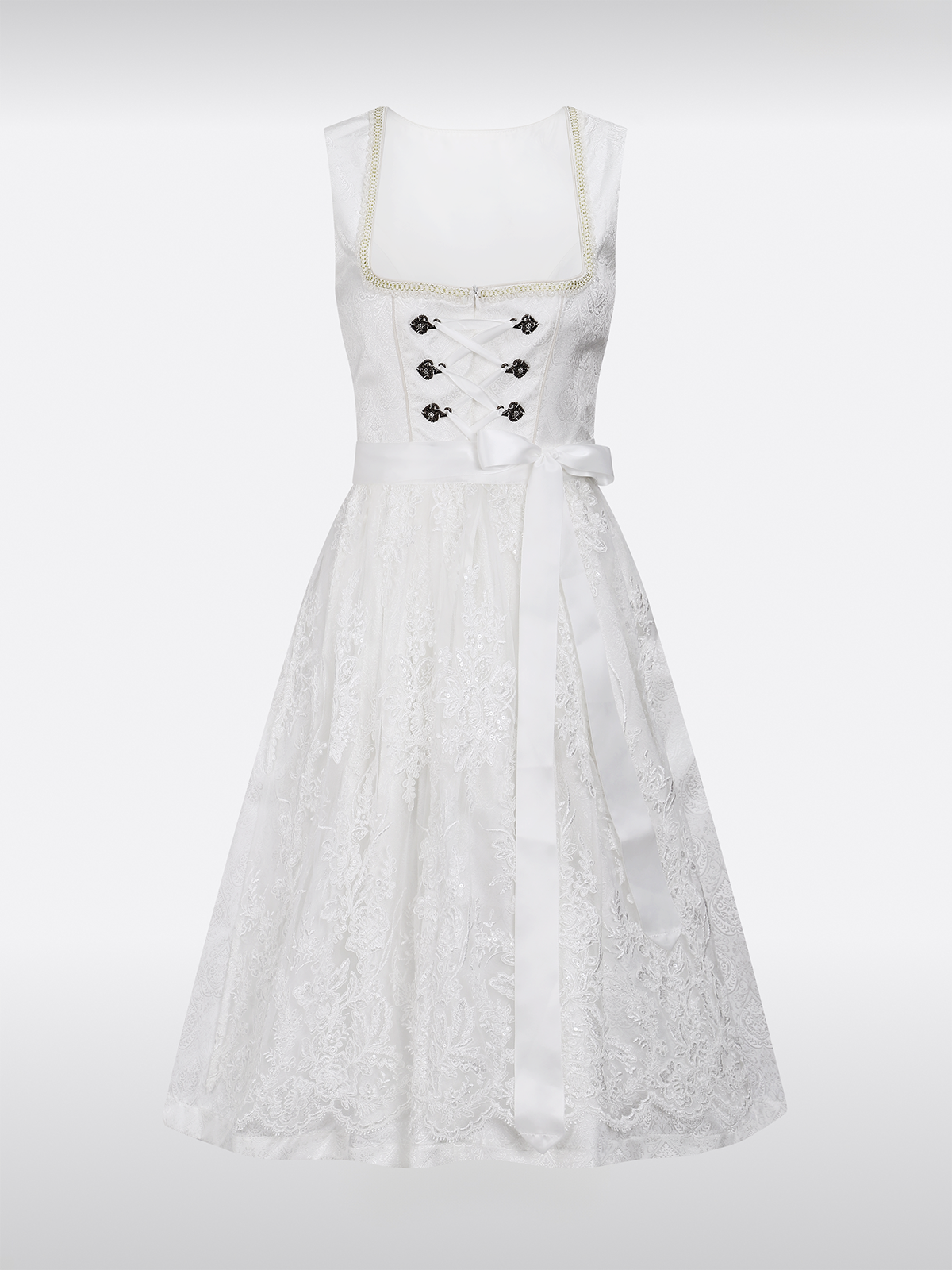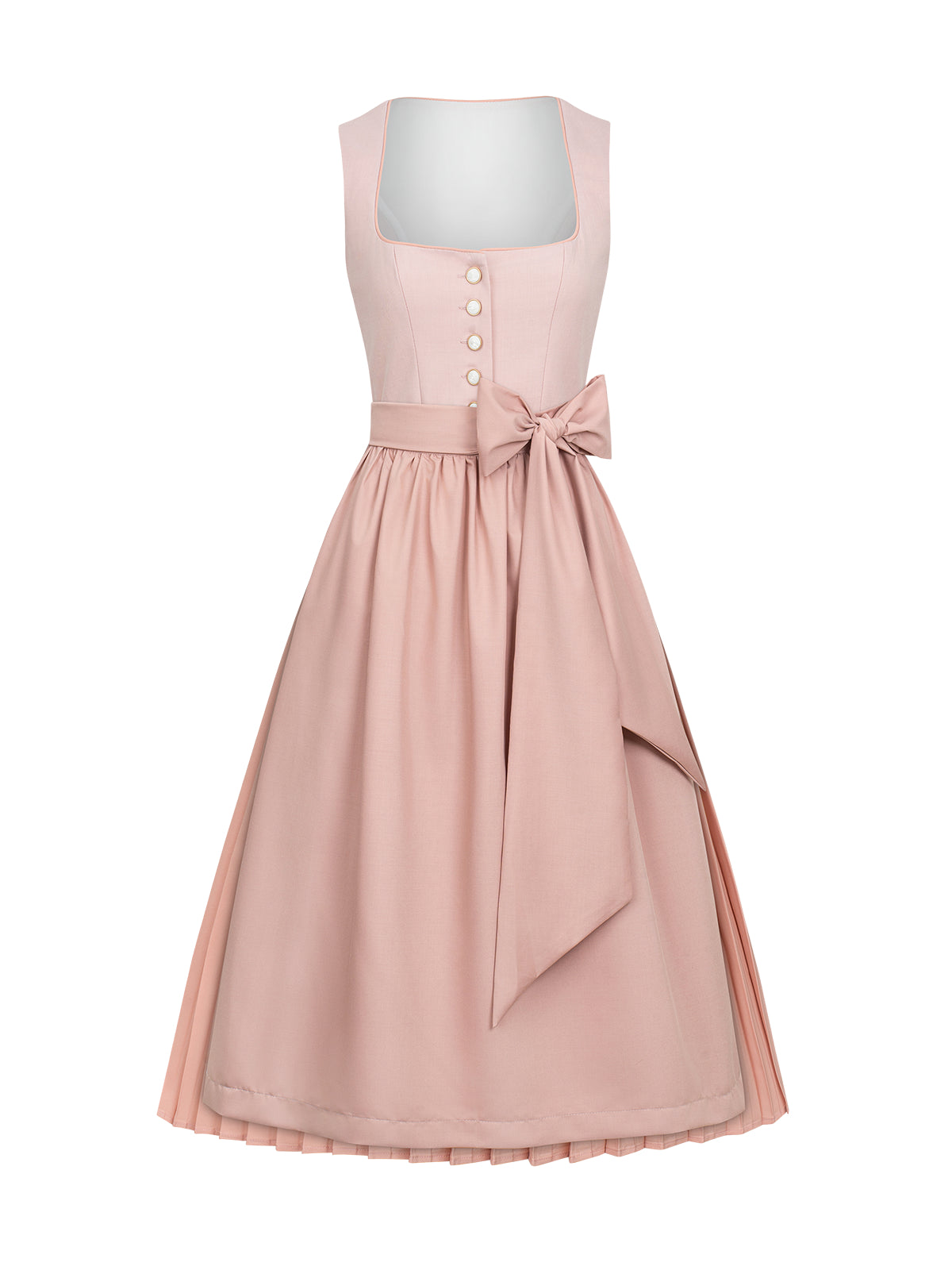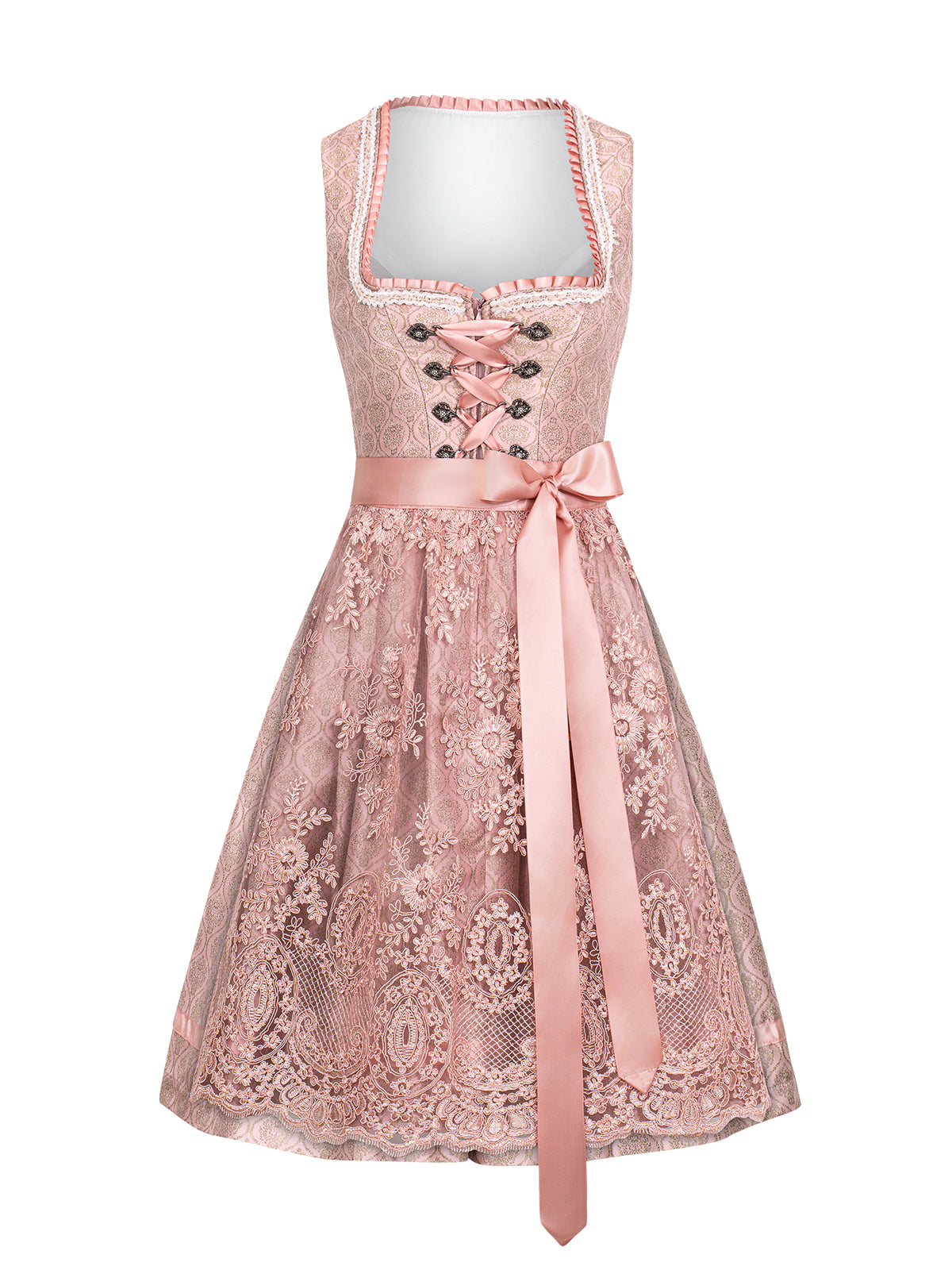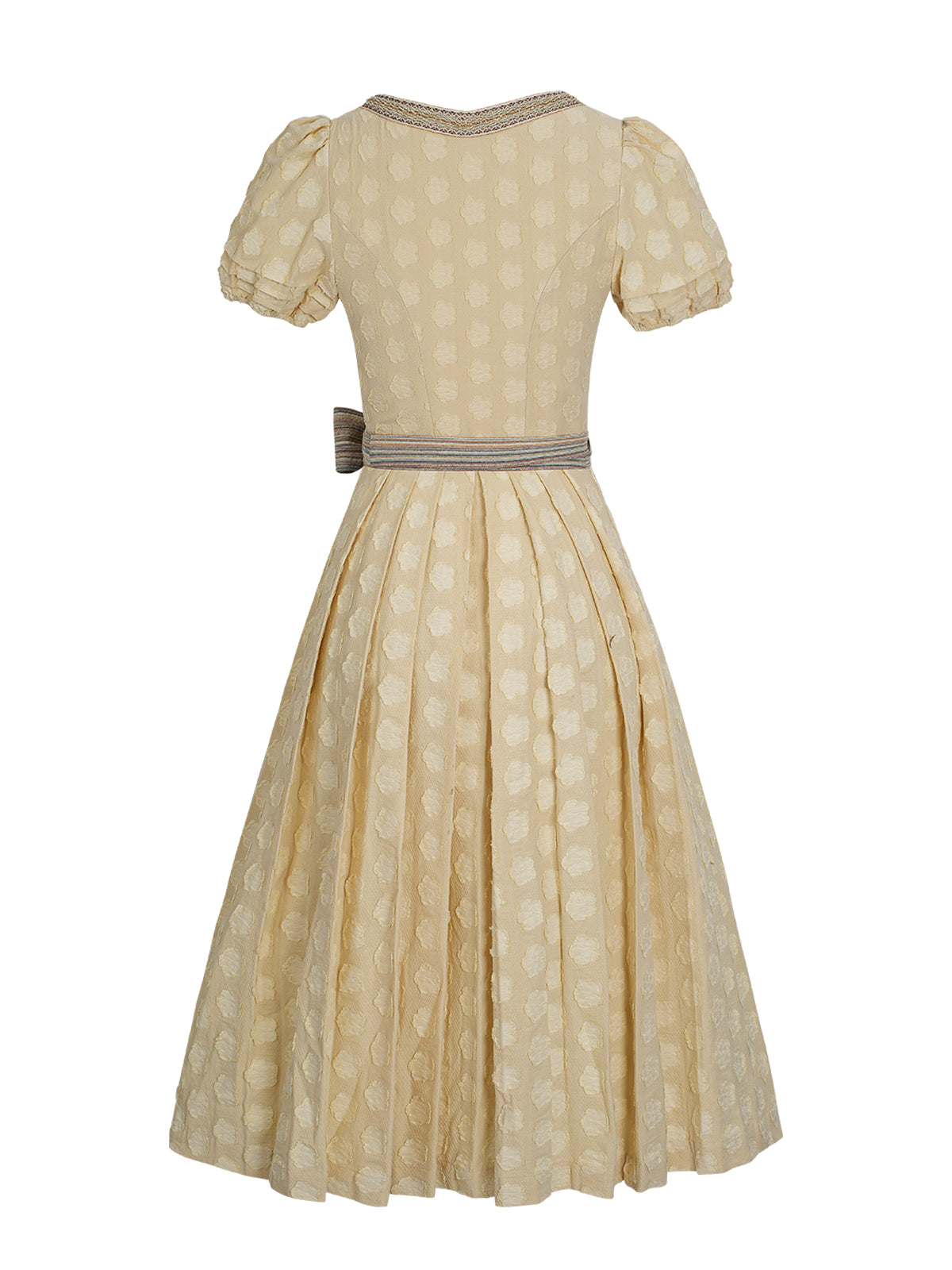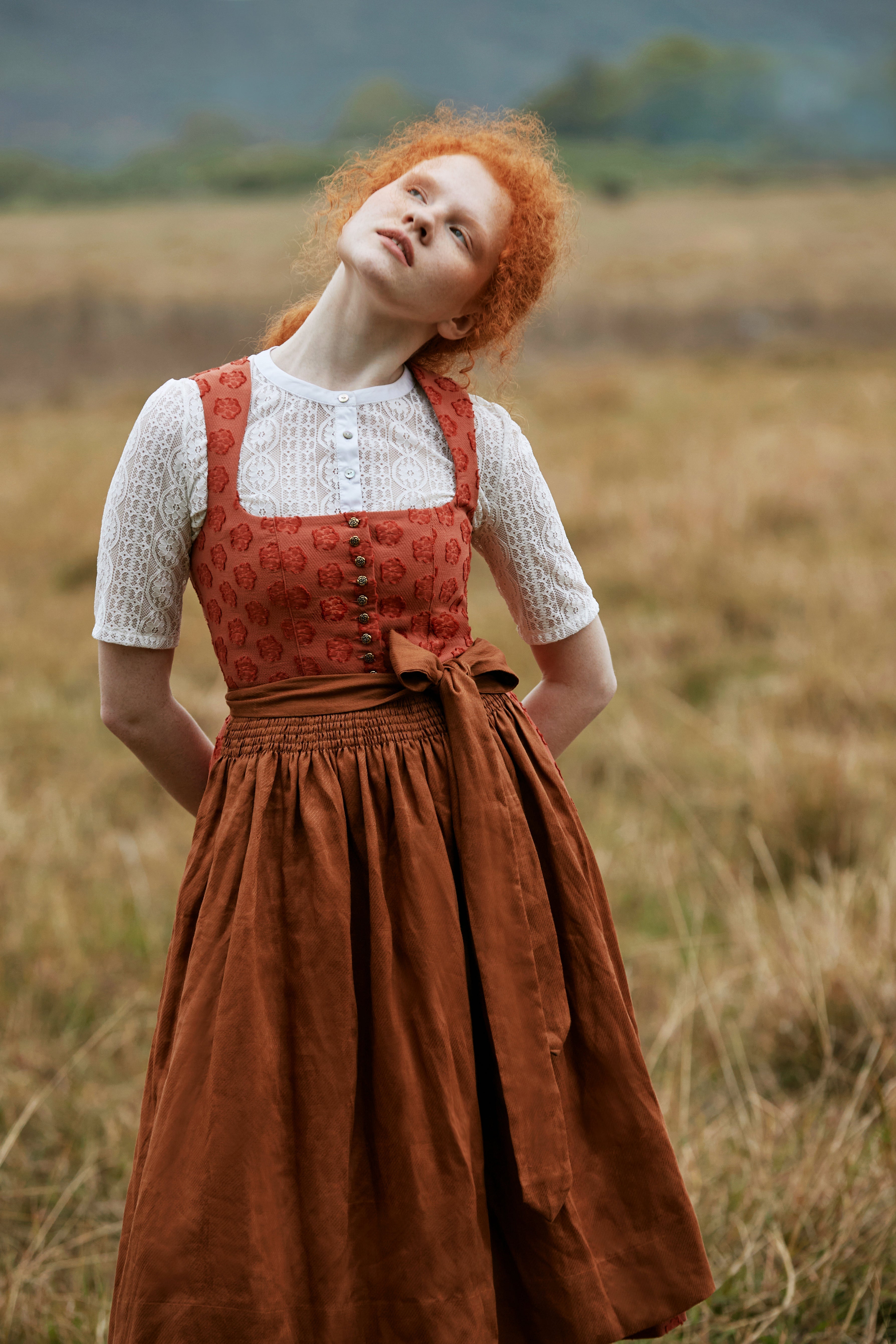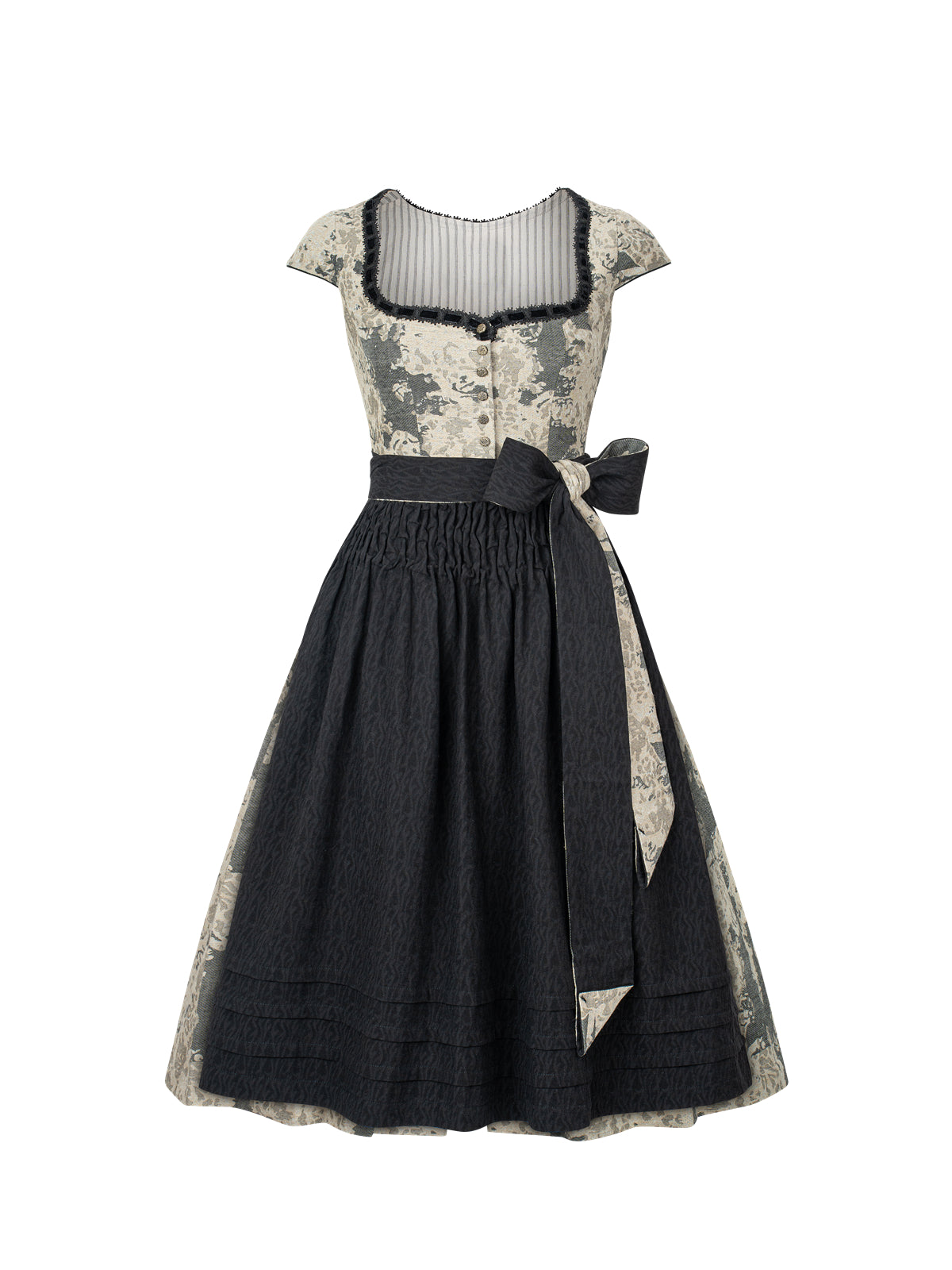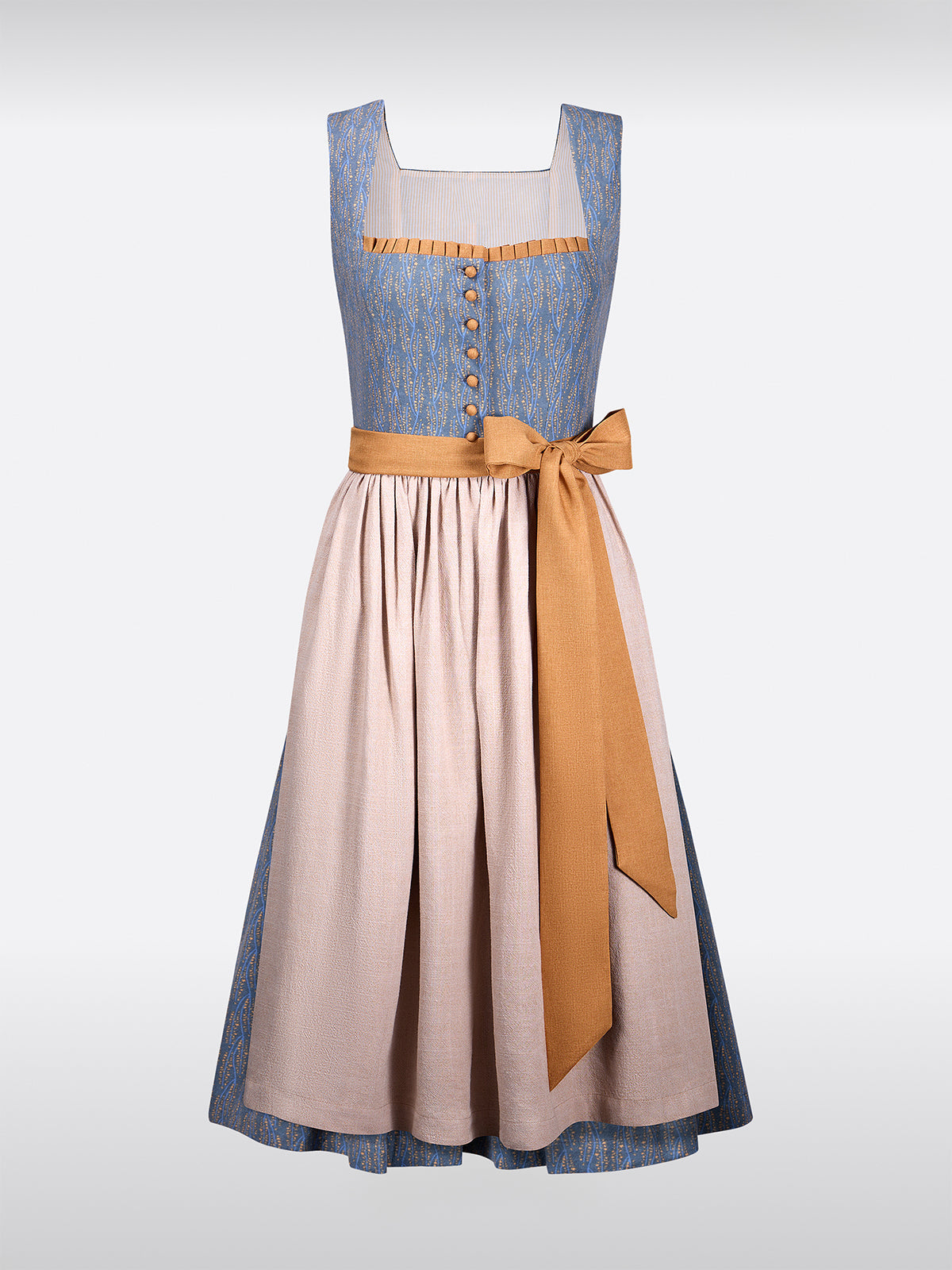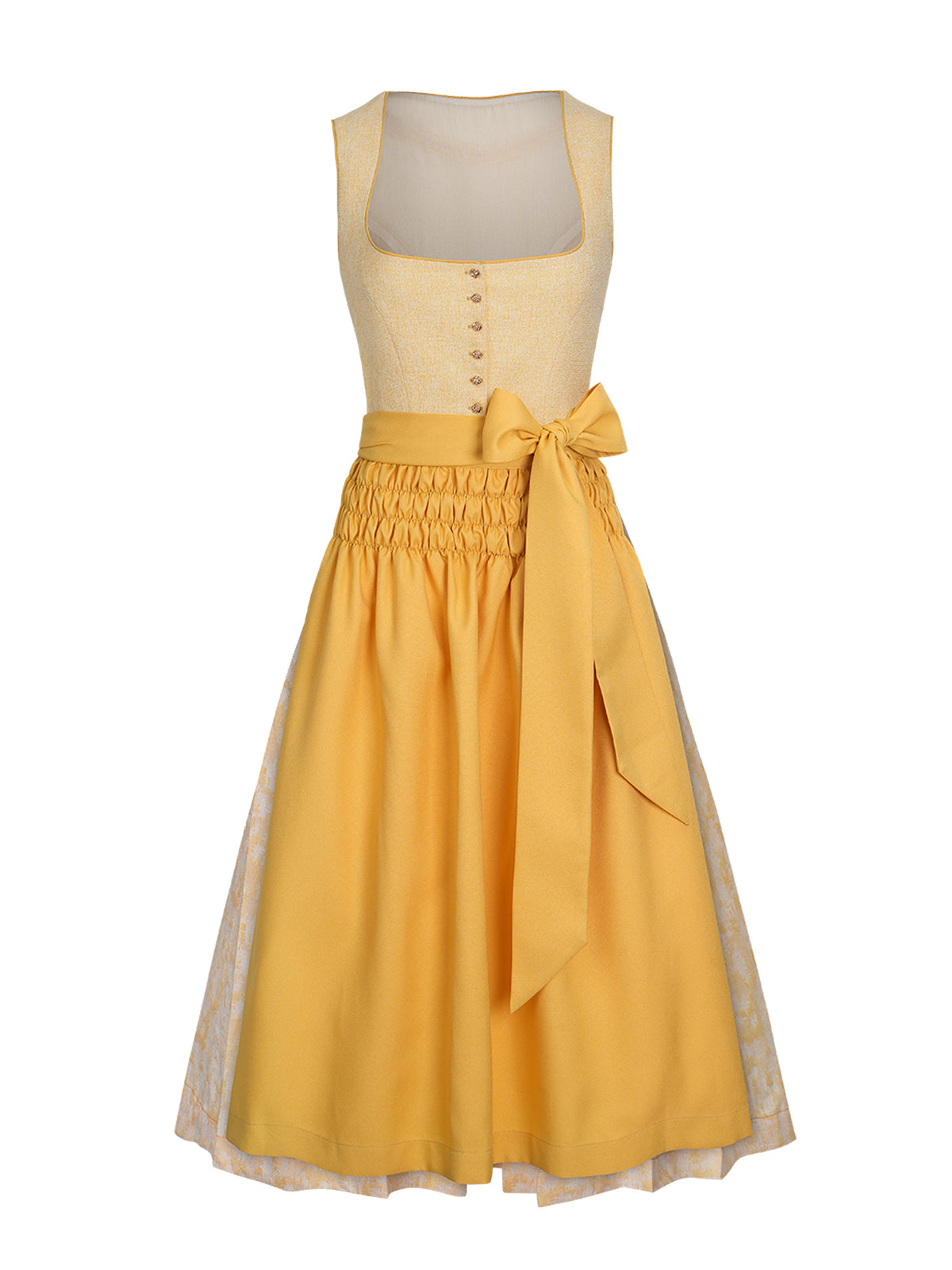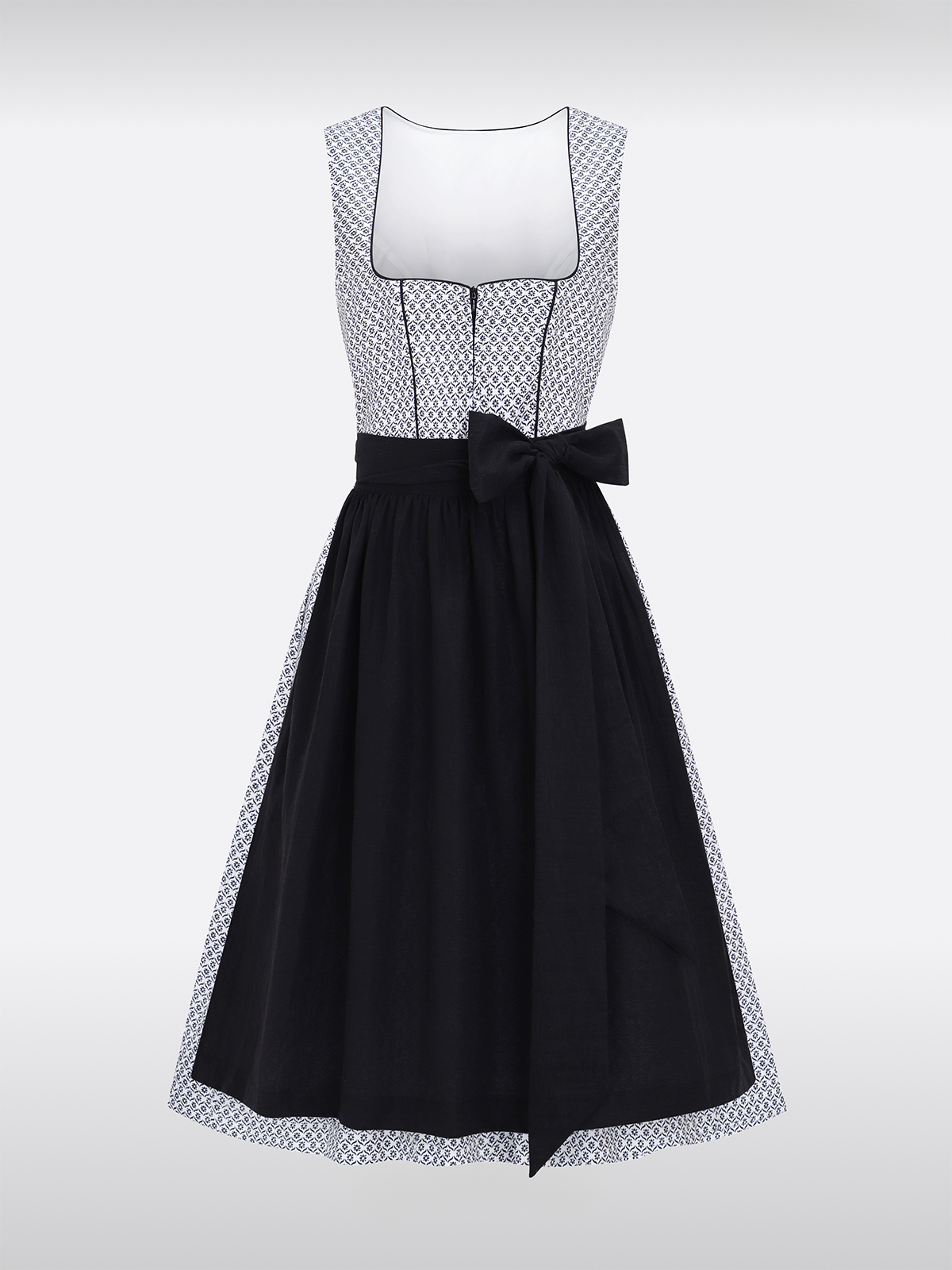History of the Dirndl
Origins
The dirndl has its roots in Bavarian peasant dress. Originally, it was a work garment for farmers' wives and maids. It consisted of a simple, long-slit top, a skirt, and an apron. The colors and patterns were rather simple and functional, designed to cope with everyday tasks.
evolution
Over time, the dirndl became a symbol of Bavarian identity. In the 19th century, it also began to gain popularity among high society. It was refined and adorned with more luxurious fabrics and decorative elements. During Oktoberfest, it increasingly became a mandatory costume and developed into a festive outfit not only in Munich, dirndl zipper front but is also known internationally.
Characteristics of the Oktoberfest Dirndl
Top
The dirndl's top usually consists of a tight-fitting corset or blouse-like piece. It is often decorated with lace, trim, or embroidery. Colors vary from light pastels to deep, vibrant colors like red, green, or blue. The top is worn to slim the bust and upper body while creating a feminine silhouette.
rock
The skirt is a long, flowing piece, usually made of a heavier fabric such as cotton or velvet. It can be either plain or pleated. Typical patterns include stripes, checks, or floral designs. The skirt is usually worn so long that it reaches almost to the floor, giving it an elegant and traditional look.
apron
The apron is an important element of the dirndl. It is worn over the skirt and can serve various functions. On the one hand, it serves as decoration, but on the other, its wearer can also provide information about the wearer's relationship status. If the apron is worn on the left side, the woman is single; on the right side, it means she is engaged or married.
accessories
A dirndl isn't complete without the right accessories. Typical accessories include a dirndl hat, often decorated with feathers or flowers, heels, gloves, and jewelry such as necklaces, earrings, and bracelets. Another important accessory is the coin purse, which is attached to the belt and is often also ornately decorated.
Manufacturing and quality
Fabrics
High-quality fabrics are used to make a good dirndl. Cotton is a popular fabric, dirndl blouses sale because it's breathable and comfortable to wear. Velvet is often used for the skirt to give it a luxurious look. Lace and trim are also made from high-quality materials to enhance the quality and appearance of the costume.
Crafts
Many dirndls are still made by hand today. This guarantees high quality and a custom fit. Craftsmanship details such as embroidery, lacework, and the assembly of the various pieces require considerable time and skill. The artisans place great importance on traditional processes and the quality of their work.
The significance of the dirndl for Oktoberfest
Symbol of culture
The dirndl is a symbol of Bavarian culture and tradition. At Oktoberfest, women from all over the world wear this costume to connect with Bavarian identity. It represents not only the history and people of Bavaria, but also the friendliness, conviviality, and fun that prevail at Oktoberfest.
Social bonding
Wearing a dirndl also creates a social bond among Oktoberfest visitors. People wearing the same costume are more likely to feel connected and can more easily converse. It's a kind of uniform that strengthens the sense of community and solidarity at the festival.
Current trends at Oktoberfest - Dirndl
Modern interpretations
In recent years, there have been more and more modern interpretations of the dirndl. Designers are focusing on new color combinations, yellow dirndl innovative patterns and modern silhouettes. Some dirndls also feature a mix of traditional and modern elements, such as a short skirt or an asymmetrical top.
Sustainable Fashion
There's also a trend toward sustainable fashion in dirndls. Many manufacturers use environmentally friendly fabrics and fairly produced materials. This not only reflects today's sustainability awareness among consumers but also their appreciation for natural resources.

